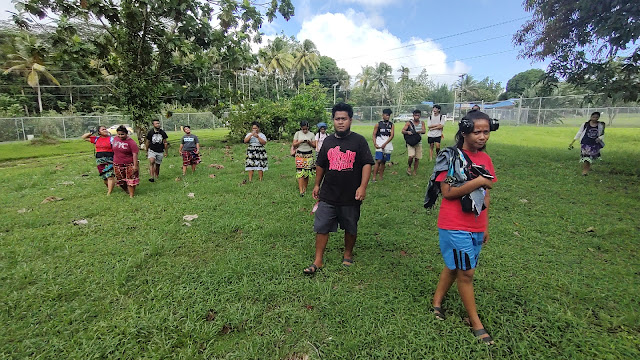Ethnobotany review of campus plants spring 2024
At 3:30 a single student was present. The two of us headed east to the Premna serratifolia and the Premna obtusifolia. Then we walked south across the road to a complex of Glochidium ramiflorum, Cordyline fruticosa, Macaranga carolinensis, and Hibiscus tiliaceus.
At this point more students arrived as we headed back north.
In the northeast corner of the campus was Volkameria inermis, Premna obtusifolia, Scaevola taccada, and Artocarpus altilis.
Tharcy making notes on her cell phone.
Almost all of the students were struggling with their local names, although the Woleaian students were doing better. Bennet and Ritarsky were key lead identifiers. The rate of loss among Pohnpeian students has really caught me off guard. But for Bennet and Ritarsky, the class would have been dependent solely on me.
As a field note, I photographed a Cyathea nigricans frond above Gardenia jasminoides. This is a nice addition to this end of the campus.
A remnant Colocasia esculenta is present. Just a single remnant plant.
I was pleasantly surprised by how well the Senna alata weathered the drought. There is obvious die back in the sunnier places where the ground was drier, but given partial shade the plants are coming back.
Centella asiatica remains present just north of the ChuuChok cultural hut.
Elaine, Ciro, Gerald, Tharcy
I opted to run most the route, here at the Jasminum sambac no one could identify the plant.
One blossom was found, but even with smelling the flower no one stumbled into a local name. The local name can help a Pohnpeian student remember the scientific name, but only if they know the local name.
Marstella and Falemon
Asplenium nidus was one of the few plants that the Pohnpeian men knew. The Woleai contingent either couldn't recall the name or there were other dynamics at play.















Comments
Post a Comment